Introduction
The ongoing pandemic of the novel coronavirus – COVID-19 – is already affecting all our lives. While the full extent of its spread and resultant mortality is yet to be seen, there is no doubt that in terms of media coverage, social dynamics, economic consequences and government reaction, something unprecedented is happening.
Far from being disjointed, every one of these elements is essentially connected to how the coronavirus pandemic is part of the larger, ongoing climate crisis. Every aspect of the coronavirus pandemic, in turn, is inseparable from the climate crisis, as can be seen from:
- The emergence of new infectious disease outbreaks due to deforestation and factory farms
- The rapid spread of coronavirus through carbon-polluting airline networks
- The impact of air pollution on respiratory vulnerability and mortality
- The solution of climate action to achieve a just transition vs. bailing out polluters
As we witness an unprecedented response to the coronavirus pandemic, it is crucial that we understand these connections with the climate crisis.
Channeling the present urgency into sustained climate action will not only provide immediate and decisive relief for those threatened by the spread of COVID-19, but it will also play an essential role in preventing the future pandemics – of infectious disease, pollution, malnutrition, and more – which will occur if we fail to prevent runaway global warming.
Emergence – Deforestation
One of the most vocal scientists working to reframe how we view infectious disease outbreaks such as COVID-19 is Rob Wallace, an Evolutionary Biologist of the Institute for Global Studies at the University of Minnesota. While the media has sensationalized the hypothesis of the virus’ origin based on the first recorded outbreak which occurred at a seafood market in Wuhan, China, Wallace notes that:
“The focus on the market misses the origins of wild agriculture out in the hinterlands and its increasing capitalization. …. As industrial production—hog, poultry, and the like—expand into primary forest, it places pressure on wild food operators to dredge further into the forest for source populations, increasing the interface with, and spillover of, new pathogens, including COVID-19”
Whatever the precise origins of COVID-19 may be, it is crucial to consider the emergence and spread of diseases like COVID-19 not as isolated incidents, but part of larger trends in which the systemic factors identified by Wallace play a decisive role.
A growing number of Emerging Infectious Diseases are estimated by scientists to be precipitated by various kinds of environmental destruction. One third can be linked to deforestation alone, which is also responsible for about 30 percent of the greenhouse gases, or GHGs, released into the atmosphere each year as one of the main causes of global warming.
Remarkably, many of the epidemics that have occurred over the last several decades – including West Nile, Ebola, Dengue, Lyme disease, Malaria, Nipah, Lassa, Madariaga and many more – are linked directly to deforestation. To highlight just one example, a 2017 study found a positive association between deforestation and malaria outbreaks in an astounding 67 countries.

Habitat destruction and deforestation have created ideal conditions for the transmission of disease whether by generating new breeding grounds for mosquitos or disrupting the natural relations between wild animals, farm animals, and humans, thereby facilitating the cross-species transfer of pathogens.
Destroying forests not only greatly contributes to global warming, but it also dramatically increases the spread of diseases. Forests serve as multiple safeguards against threats to planetary health. Much of the deforestation occurring today is directly caused by the expansion of industrial agriculture, including factory farms.
Emergence – Factory Farms
In addition to deforestation’s role in causing both global warming and infectious disease outbreaks, the giant farms that mass produce pigs, cows, chickens, etc., also play a major role in the emergence of infectious diseases. The conditions these animals are grown and harvested in are ideal environments for diseases making the leap to infecting humans because they have access to an almost endless supply of genetically identical animals packed in close quarters to easily spread and mutate through.
One prominent example of how factory farms serve as incubators for infectious disease outbreaks is the 2009 Swine Flu – H1N1 – dubbed by Dr. Wallace as “the NAFTA Flu.”
The North America Free Trade Agreement, or NAFTA, created a trilateral trade bloc between Canada, Mexico and the United States on January 1, 1994. NAFTA – one of the biggest ever trade agreements – created a legal architecture devastating for the environment in many ways, including easy loopholes which enable corporations to export or “offshore” their pollution and GHG emissions, while disincentivizing politicians from passing strong laws for fear of losing corporate activity.
As a result, NAFTA accelerated the consolidation and transformation of small farms into enormous, industrial-scale breeding grounds for disease. For example: in 1997, after facing a $12.6 million fine for violating the U.S. Clean Water Act, Smithfield Farms pivoted to expanding industrial pig farms in Mexico instead of changing to comply with these environmental regulations to protect health and safety. Just one decade later, Smithfield Farms’ massive & unregulated pig farm in Veracruz, Mexico became the incubator for the 2009 H1N1/swine flu pandemic.
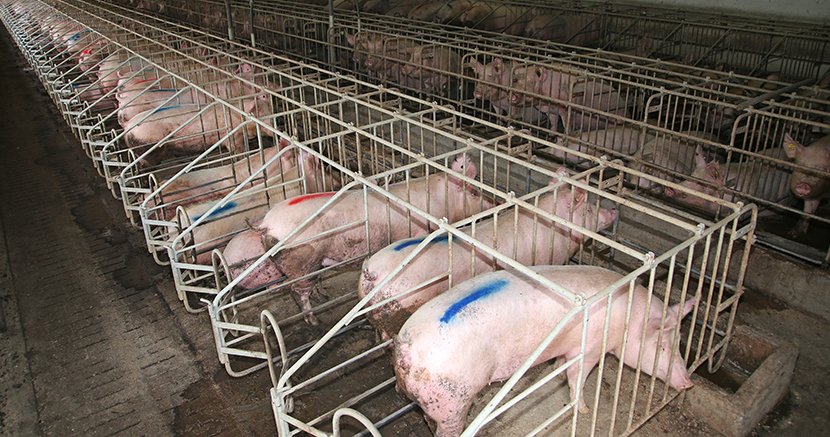
By creating investment incentives for transnational corporations to relocate operations to wherever environmental health & safety regulations were the weakest, NAFTA unleashed the spread of industrial livestock farms in Mexico. This mass expansion of industrial farms not only led to disease outbreaks such as the swine flu; it also represented a general shift in the continent’s food & trade system which was devastating for people and the environment in a number of other ways.
The mass consolidation and relocation of factory farms led to around 2 million Mexican farmers losing their land and the closure of 42,000 small American farms. Yet corporate profits were higher than ever, as each country traded to the other in bulk what they could have otherwise produced locally. For example, Florida tomato growers were forced to cut the number of acres dedicated to tomatoes by 25% under NAFTA, while Mexico upped its production by 230%.
Before NAFTA, Mexico was largely food self-sufficient via corn, a staple food and sacred plant for many Indigenous populations. Now almost half of Mexico’s food and much of its corn is imported from abroad, mostly from the U.S. The effects have been devastating for much of the Mexican population: 20 million Mexicans live in “food poverty”, 25% of the population does not have access to basic food and one-fifth of Mexican children suffer from malnutrition.
Clearly, NAFTA’s increased international circulation of mass-produced food commodities is not helping feed people, support farmers, or protect the environment. Instead, it has made the food system more dangerous to human health by fostering new diseases and more dangerous to environmental health by increasing fossil fuel emissions in both the production and transportation of food.
Whether it is by supersizing farms to rely on industrialized, fossil-fuel intensive inputs (fertilizer & pesticides), or the increased emissions which result from needlessly shipping food thousands of miles between countries when it could be produced locally, the economic program of deregulation for corporate profits is also playing a major role in accelerating global warming.
Shifting to sustainable and symbiotic models of agriculture and land management is an essential part of the just transition that must immediately occur to deescalate this crisis and prevent future pandemics. By supporting local and organic farmers, and starting community gardens of our own, we take the simple but essential steps which are necessary to prevent future pandemics while providing a clean, healthy, and abundant global ecosystem for future generations.
Spread – Airlines
It is not just the emergence but also the virulent spread of new pandemics which is inextricably linked to the industrial economy responsible for the ongoing climate collapse. In this capacity, the airline industry has played an indispensable role in facilitating the rapid proliferation of COVID-19 to achieve pandemic status.
Many of the first reported cases in numerous countries around the world arrived via air travel. Even the World Economic Forum acknowledges that the massive increase in air travel over the last few decades – quick, long-distance travel that heats up the planet – has played an essential role in enabling the rapid spread of COVID-19.
Although aviation’s role in spreading diseases has been recognized by the scientific community for many years, the International Civil Aviation Organization – an industry advocacy agency of the UN – lobbied to delay the adoption of health measures which would reduce air traffic and slow the spread of COVID-19, just as it is also undermining efforts to reign in the industry’s destabilization of our climate.
Nevertheless, all around the world the amount of commercial passenger trips has dramatically dropped as governments have implemented travel restrictions and consumers have abstained from flying. The result has been an unprecedented drop in plane flights which led the International Air Transport Association, or IATA, another industry lobbying group, to that the industry faces “an apocalypse” and “its gravest crisis.”
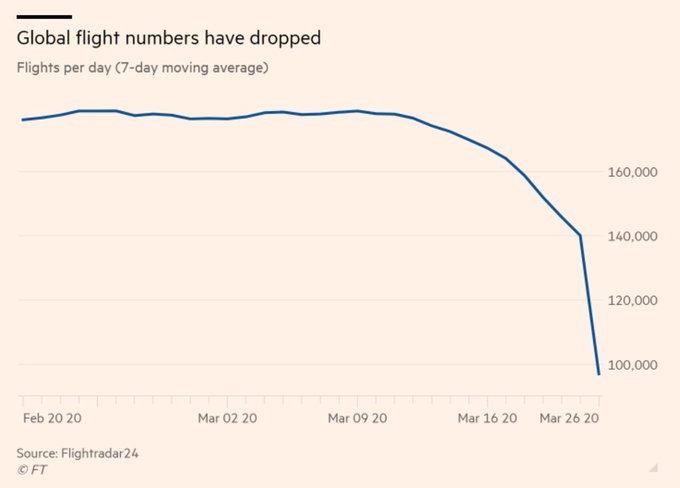
While such a result may be a crisis for the industry, it would greatly help reduce emissions. Aviation is responsible for approximately 5-8% of humanity’s total GHG emissions, and no other human activity pushes individual emission levels as fast and as high as air travel. Burning an estimated 5 million barrels of oil every day, air travel is the fastest-growing sector of the fossil fuel industry.
After fighting against health measures to prevent the spread of the novel coronavirus, the industry’s priorities were again on display when the industry confronted declining demand for air travel. Well before the 90% reduction in domestic U.S. air passengers and 75% drop worldwide we are seeing now, airlines continued flying empty planes or “ghost flights” burning many thousands of gallons of fuel to keep their scheduled spots under the European Union’s “use it or lose it” rule.
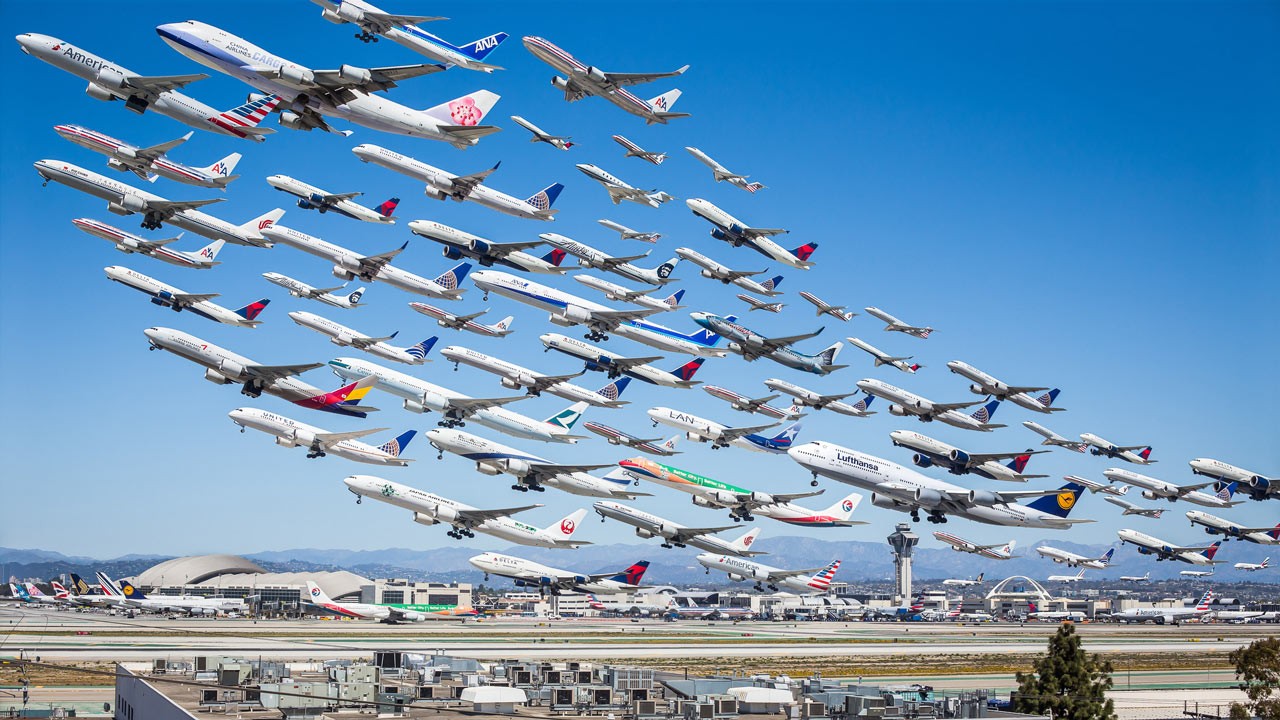
The federal stimulus bill is now set to bail out one of the chief industries not only responsible for the spread of the pandemic but also the health catastrophe that is global warming, with Trump declaring that airlines are the “number one” priority for federal assistance. While over $50 billion has been doled out in grants and loans to the industry, even the weak environmental protection measures proposed by Democrats were not included.
While ordinary people across the country and around the world are struggling to pay for bills and provide for their families, U.S. airlines spent 96 percent of their cash profits in the last decade on stock buybacks to enrich investors and their own executives. The disparity has led to calls for more funds to go to individuals and families struggling because of the economic impact of COVID-19, (particularly people of color who will be disproportionately affected by the economic crisis) and for public funds to be used to facilitate a just transition to environmentally sustainable jobs and clean methods of transportation.
As the International Stay Grounded Network declared in a letter to EU transport ministers:
“…. Let’s not bail out shareholders and executives who have spent years lining their pockets, while hundreds of thousands of small businesses, owner-operated restaurants and creative artists go out of business. Crisis requires solidarity… the current situation requires collaborative planning for a just transition: employees in the aviation sector should receive training for climate friendly jobs, and a shift towards climate-safe forms of travel has to be undertaken. It is no option to go back to business as usual after the COVID-19 crisis…”
Impact – Air Pollution
As COVID-19 rapidly makes its way across the planet, it’s not just airlines that are reluctantly reducing their emissions. Industries across the world are either temporarily shutting down or reducing output — and air pollution has dramatically declined as a result.

The effect was first observed in China, where the weeks leading up to March saw a 200 million ton (25%) decrease in CO2 compared to the same period last year in China.
Overall, as Gizmodo reports, the response to COVID-19 has been an unprecedented slow-down of the fossil fuel economy:
“World oil demand for the first quarter of 2020 will be 3.8 million barrels of oil a day lower than a year earlier, a demand reduction that’s the single biggest quarterly drop on record.”
“What’s also different is how instantaneous this was because China basically switched off large sectors of its economy almost overnight…”
This strong response to COVID-19 first taken by China – and then by other countries to varying extents – has not only prevented greater spread of the virus, but it has also resulted in tens of thousands of lives saved from the parallel pandemic of air pollution.
A recent estimate found that China’s reduction in air pollution has saved the lives of 4,000 kids under 5 as well as 73,000 adults over 70 in China. Industrial society today not only facilitates the emergence and spread of infectious diseases; it is also responsible for the leading cause of preventable deaths worldwide – air pollution – estimated by the European Heart Journal to cause about 8 million early deaths per year.
So far COVID-19 has killed far fewer people this year. But rather than treating coronavirus and air pollution as discrete pandemics competing for our attention, these health crises must be recognized as fundamentally intertwined.
Air pollution acts as a force multiplier for respiratory infectious diseases like COVID-19 in multiple ways. Paul Monks, a professor of air pollution at the University of Leicester, notes that “a high level of air pollution exacerbates viral uptake because it inflames and lowers immunity.” In addition, air pollution particles may also be a vector for pathogens. In both ways, it is poised to intensify the impact of COVID-19.
These insights have been established via empirical studies. For instance, Scientists who analyzed the first coronavirus outbreak in 2003 found that “infected people who lived in areas with more air pollution were twice as likely to die as those in less polluted places.”
The current COVID-19 outbreak has also shown a similar dynamic at play in Italy. Italy has long been plagued by air pollution, with 84,000 people dying from air pollution-related causes a year.
This has been one of the primary reasons cited to explain why Italy has seen a high mortality rate from COVID-19 compared to other countries experiencing outbreaks. The epicenter of Italy’s coronavirus epidemic is the Lombardy region, which has much of Europe’s most heavily polluted air.

Amazingly, research shows that reducing air pollution brings about an almost instantaneous and significant improvement of public health, even including an immediate decrease in mortality rates.
Changing our behavior as part of large-scale measures to address the ongoing air pollution pandemic killing millions of people a year – disproportionately the world’s poor – is therefore not only an incredibly important cause in its own right; it’s also a vital aspect of combating the coronavirus pandemic and future infectious respiratory diseases.
Solution – Drive-Thru Health Care?
On March 13th Donald Trump declared a national emergency, after having previously declared COVID-19 to be a hoax in February. The same day, he announced the beginning of a nationwide effort to implement a drive-thru testing regimen, after having previously refused tests offered by the WHO the month before.
Insufficient testing is a major factor in the U.S.’s failure to control the epidemic, part of the reason that it is now home to more COVID-19 cases than anywhere else in the world. This reflects the structural inequality in the health care system, as many people at risk or with symptoms are not getting tested or treated due to the exorbitant costs of health care even with insurance.
Just as the coronavirus is already having a disparate impact due to the racial wealth gap, automotive illnesses are also unequally distributed. People of color are less likely than white people to own vehicles, and more likely to live and work in high-traffic urban areas, where they are killed in car crashes or by auto exhaust at higher rates.
The drive-thru test centers the U.S. is now implementing perpetuate this dynamic. The roll-out of these centers has been characterized as a “disaster” marked by numerous inconsistencies, delays, and shortages, forcing people to wait in hour-long lines of cars. The very people seeking to be tested for a potential respiratory infection are being exposed to the high levels of air pollution capable of increasing both the mortality and spread of this pandemic.

Many of these centers are making automobility a requirement for testing, and do not provide any kind of “walk-up” appointments at all. As one patient noted: “We have a lot of elderly, low-income people here who don’t have access to the internet and who don’t have access to transportation. And given that they’re the highest risk population, how are we getting tests to them?”
Yet it doesn’t have to be this way. As one physician has noted, makeshift outdoor clinics could still easily implement social distancing requirements while providing walk-up appointments instead of exposing people who may have a life-threatening respiratory illness to the serious risk factor of car exhaust. So why aren’t automobiles being treated as a health risk?
The stark reality is that it has always been this way. When it comes to the U.S, Automobiles are the #1 killer of children and are responsible for over 35,000 deaths per year by vehicle collisions and at least 50,000 per year from air pollution.
Worldwide, automobiles are responsible for killing one million people from collisions every year, and if the U.S. ratio scales up as many as three million people every year from air pollution.
As travel has sharply decreased, the benefits of reducing automobility have been on full display with lives being directly saved from less pollution (a sizable percentage of the 70,000+ lives saved in China) and incredible drops in auto traffic & air pollution in major U.S. cities and around the world.
For example, a 60% drop in traffic in California has resulted in a 50% reduction in collisions on roadways (about 15,000 crashes) in addition to unprecedented increases in air quality across the state.
Decreasing vehicular collisions is also vital during this pandemic because already over-crowded hospitals are not able to handle influxes in patients due to anything else. Many policymakers around the world are calling attention to roadside collisions, even going as far as to say that they are “the world’s neglected pandemic.”
Despite their role in the crisis, the Trump administration is currently setting up Ford, GM, and other automotive companies to profit from the United States’ severe lack of ventilators with contracts worth billions of dollars.
Under this plan, the automobile industry which pollutes the air billions of people breathe every day is set to profit billions from producing the equipment needed to help treat a respiratory disease made deadlier by its main product.
However, if car factories were switched permanently to making medical supplies, and if the decrease in automobiles were to persist in the future indefinitely, millions of lives could be directly saved while the benefits to the environment from reduced pollution and greenhouse gases would be enormous.
Solution – Bailouts, Deregulation, and “National Security”?
The day after Trump invoked the Defense Production Act to grant the automotive industry a massive public relations offensive through the production of ventilators, he enacted what has been called his “biggest rollback yet of federal climate protections”: the dramatic lowering of the EPA’s automobile fuel standards.
As something the industry has long been lobbying for, Trump’s new rules are set to allow automakers to continue producing dirtier vehicles which will generate an expected additional one billion tons of carbon dioxide above what the previous regulations allowed.
By ensuring motorists will purchase and burn more oil, Trump’s new measure is increasing the auto industry’s profits by further harming human and environmental health. Additionally, In the words of meteorologist Eric Holthaus, “it’s a massive transfer of tens of billions of dollars from drivers to oil companies, as consumers will spend more on gasoline due to less efficient cars.”
But it’s not just the automobile industry which is set to profit from Trump’s response to COVID-19. Almost all sectors of the Fossil Fuel industry are feeling the strain from the decrease in economic activity due to COVID-19, and a federal bailout is on the table. On Friday, Trump met with executives from Exxon Mobil, Chevron, and Continental Resources, among others.
The American Petroleum Institute, or API, claims that fossil fuel companies are not looking for federal bailouts, but they are asking for environmental regulations to go away – which could potentially save polluters billions of dollars from not having to comply with laws designed to protect our health and safety.

There are many egregious examples of polluters exploiting COVID-19 worth highlighting, such as the National Mining Association lobbying to stop paying into a fund for sick coal miners afflicted with industry-related illnesses. Another example is the Trump Administration seeking $3 Billion to top off national petroleum reserves.
But the most comprehensive bailout of all took place less than a week after the API petitioned Trump to waive environmental regulations. On March 26, the EPA indefinitely suspended all environmental laws in an attempt to offset the decrease in industrial activity saying it would not “seek penalties for noncompliance with routine monitoring and reporting obligations.”
This unprecedented measure follows nearly 100 environmental laws that have already been rolled back by the Trump Administration. As a result, an estimated 10,000 more people are now already dying annually from increased air pollution.
Yet as thousands of people have died due to Trump’s environmental rollbacks, on the very day he indefinitely suspended the remaining laws protecting people from pollution, he declared on Twitter:
“Our great Oil & Gas industry is under seige after having one of the best years in recorded history. It will get better than ever as soon as our Country starts up again. Vital that it does for our National Security!”
While Trump invokes national security in the “war on coronavirus” to protect the oil & gas industry “under siege,” three states have passed new laws criminalizing environmental activists and Trump’s justice department has asked to be granted the authority to indefinitely detain people during national emergencies.
As senior Democrats and think tank pundits openly call for the U.S. military – the world’s largest GHG emitter – to step in and take over the management of this crisis, it is not an exaggeration to say that martial law could be on the horizon. The Governor of California already openly declared that martial law was on the table weeks ago. Time will tell what is to come next.
The Real Solution: Empowering Communities to Work for a Better Future
One alternative to the Trump administration’s approach which has been circulating is the idea of a green stimulus program – not unlike the Green New Deal – that is focused on building a sustainable infrastructure not dependent upon fossil fuels while creating millions of new jobs for people across the country – a “people’s bailout.”
Such an effort has never been more needed – not only because of the dire state of the environment – but also because of the ongoing spike of unemployment.

An unprecedented number of workers across the U.S. have lost their jobs as businesses are being ordered to close. Many are worried about how they will survive without a paycheck coming in, and structural inequalities are worsening due to the racial wealth gap.
In response to these conditions, mutual-aid projects have been sprouting up around the country as people attempt to grapple with the reality that day-to-day life has changed quickly and dramatically. From supporting those who have become more vulnerable to domestic violence during quarantine, to supporting the Wampanoag Nation who have now become the first federally-recognized tribe to have their reservation disestablished by the government in over 50 years, the form this takes will inevitably vary depending on the circumstances.
What is certain is that the mutual aid approach will be essential to any future attempts to achieve something like a Green Stimulus or Green New Deal. Gender violence, violations of Indigenous sovereignty, and environmental destruction are deeply interrelated. For this reason, the Indigenous-led Red Deal movement embraces the goals of the GND while working to build the people power necessary to achieve them with an emphasis on these connections.
As social, political, and economic circumstances continue to be volatile, we must do everything we can to support each other in the immediate ways that are available to us now, and strengthen our solidarity in the future. With a Green Stimulus blueprint to create millions of family-sustaining, career-track green jobs while lifting up and collaborating with frontline communities, we must grow and invest in the energy, food, transit, and social systems we need to avoid the disruptions and exploitation exhibited by the system’s failures in responding to COVID-19.
Conclusion – What We Must Do
COVID-19 is a result of the ongoing destruction of the planet and is but one symptom of a system that is inherently destructive and violent towards everything it touches. But as we respond to this pandemic, we are being presented with an alternative path (a path that has always been available to us).
This alternative path is one of solidarity with our neighbor, a path that values the health of the earth and our fellow humans and non-humans over profit and greed, a path that abandons destructive technology like airplanes and the personal automobile, a path that stops burning fossil fuels, a path that does not continue to bail out big corporations, a path where our workplaces prioritize the health of the planet, a path were food is produced organically, ethically, and locally, a path that provides healthcare for all, a path that provides education for all, a path that allows us to take a step back and slow down from the ever-increasing speed of modern life.
As we travel down this path, the severity of global warming must not be underestimated:
“We have already lost most of our Arctic ice, most of our wild animals, and much of our productive land. Our trajectory is towards a catastrophic 3C of warming or more. To limit the inevitable damage, we must act now.”
All the means needed to reverse global warming are available already, it is just a matter of stopping deforestation, putting an end to industrial agriculture, and stopping record levels of CO2 being pumped into the atmosphere by curbing reckless production and consumption.
The immediate and unprecedented drops in demand for oil, plane, and automobile travel shows that when faced with an urgent enough reason, the rapid and drastic reductions of pollution required to avert runaway global warming was always within our grasp.
If the necessary transitions to avoid total climate collapse do not occur, we risk a billion refugees being forced from their homes by 2050 due to sea-level rise, drought, famine, and other extreme weather disasters, amidst major health crises around the world.

For example, scientists are now predicting that an additional one billion people could be exposed to the potentially lethal mosquito-borne Dengue Fever, for which the incidence has already increased by 10% due to global warming.
And this is just the beginning… if humanity does not reverse course, 500 million people will face lethal heatwaves on a regular basis and billions of people will soon run out of fresh water.
COVID-19 is a warning of things to come if society does not transition to a responsible mode of engaging the world and rethinking the way disease and nature are approached.
The fate of future generations is in our hands. How we choose to respond to COVID-19 and whether we return to climate-destroying and polluting behaviors or use the current momentum to achieve long-term systemic change will have lasting effects for millions of years to come.
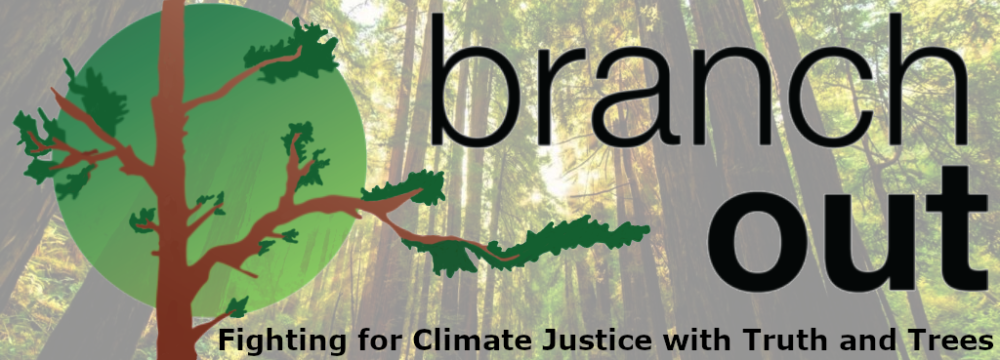
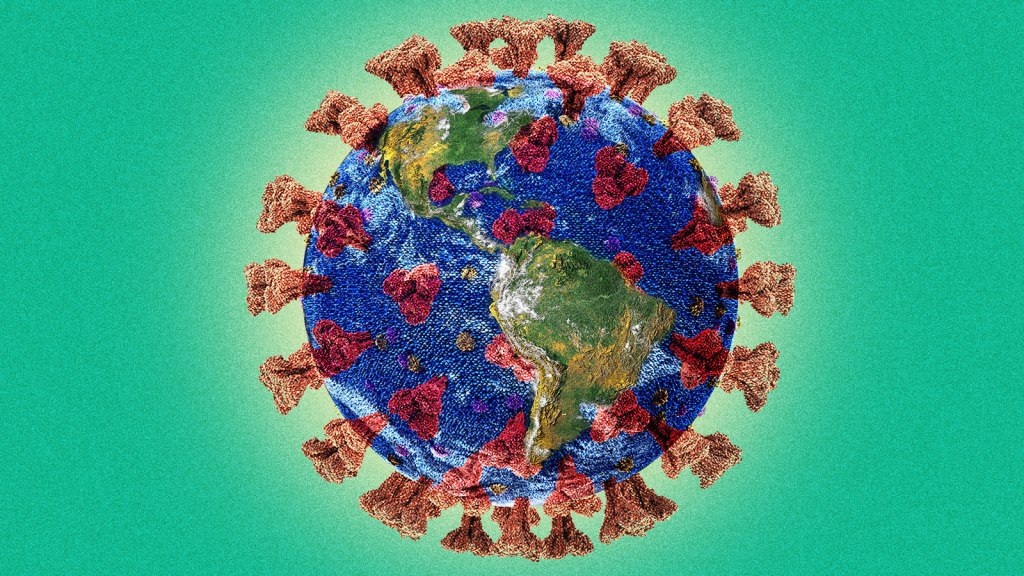
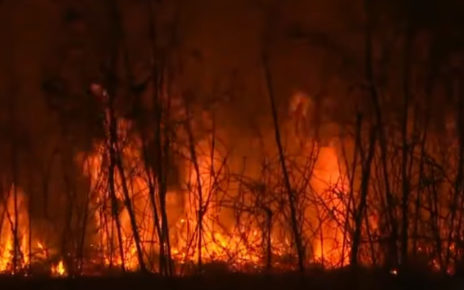
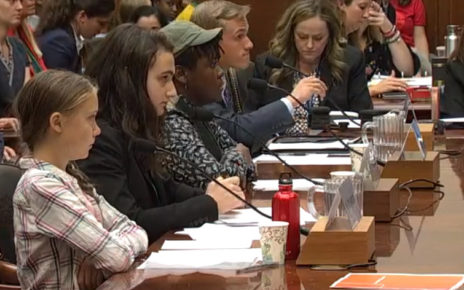
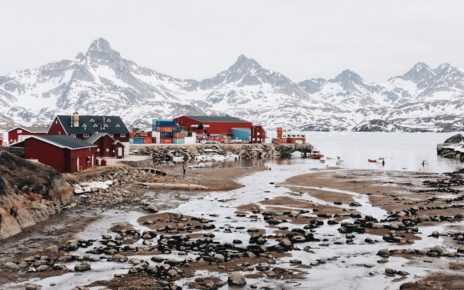
2 Replies to “Coronavirus and the Climate: A Singular Crisis”